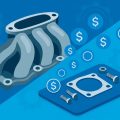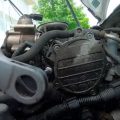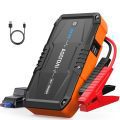As a DIY mechanic, you understand the satisfaction that comes from tackling automotive issues on your own. However, diagnosing problems can often feel overwhelming, especially with the complexities of modern vehicles. That’s where OBD (On-Board Diagnostics) scanners come into play. These essential tools can empower you to identify and resolve issues with precision and ease. In this blog post, we’ll delve into the various types of OBD diagnostic scanners available on the market, highlighting their features and benefits. By the end, you’ll have a clear understanding of which scanner is best suited for your unique needs, enabling you to take control of your vehicle’s maintenance and repairs with confidence.



Understanding OBD Diagnostic Scanners
Onboard Diagnostics (OBD) diagnostic scanners are critical tools for anyone interested in automotive maintenance and repair. These devices allow users to communicate with a vehicle’s onboard computer to retrieve valuable information regarding its performance and any potential issues. In this section, we will explore what OBD diagnostic scanners are, how they work, and the evolution of OBD systems from OBD-I to OBD-II. We will also discuss the key features that make an effective scanner and provide practical examples of specific brands and models.
What Are OBD Diagnostic Scanners?
OBD diagnostic scanners are electronic devices that connect to a vehicle’s OBD system, enabling users to read and interpret diagnostic trouble codes (DTCs) and other data. These codes indicate issues within the vehicle’s engine, transmission, and other critical systems. By reading these codes, mechanics and DIY enthusiasts can diagnose problems effectively and efficiently.
How Do OBD Scanners Work?
OBD scanners work by connecting to the OBD port in a vehicle, usually located beneath the dashboard near the driver’s seat. Once connected, the scanner communicates with the vehicle’s powertrain control module (PCM) to retrieve data. The basic process is as follows:
- Connection: Plug the scanner into the OBD-II port using a compatible connector.
- Communication: The scanner sends a request for data to the vehicle’s PCM.
- Data Retrieval: The vehicle responds by transmitting information, including error codes and real-time data.
- Data Interpretation: The scanner displays the retrieved information, allowing users to interpret and diagnose issues.
Evolution of OBD Systems: From OBD-I to OBD-II
OBD-I: The Early Days
Introduced in the early 1980s, OBD-I was the first generation of onboard diagnostics. Each manufacturer developed its own codes and communication protocols, making it challenging for mechanics to diagnose issues across different brands. OBD-I primarily focused on monitoring emissions but had limited capabilities.
OBD-II: A Standardized System
In the mid-1990s, OBD-II was introduced, establishing a standardized protocol for all vehicles sold in the United States. This system improved diagnostics significantly, as it provided a uniform set of codes and communication methods. Key features of OBD-II include:
- Universal Codes: OBD-II uses standardized DTCs (e.g., P0420 for catalytic converter efficiency) across all vehicles.
- Enhanced Monitoring: OBD-II monitors various systems, including the engine, transmission, and emissions controls, providing a more comprehensive diagnosis.
- Live Data Streaming: Users can access real-time data such as vehicle speed, engine RPM, and coolant temperature.
Importance of Reliable Scanners
Having a reliable OBD diagnostic scanner is essential for both simple and complex automotive diagnostics. Simple problems like a loose gas cap can trigger warning lights, which can be easily resolved with basic OBD-IIs. However, more complex issues, like engine misfires or transmission problems, require detailed diagnostics. A reliable scanner can save time and money by providing accurate information.
Key Features of Effective OBD Scanners
When choosing an OBD scanner, consider the following key features:
- Error Code Reading: Ability to read and clear DTCs.
- Live Data Streaming: Capability to view real-time engine data.
- Compatibility: Support for various vehicle makes and models, including both domestic and foreign cars.
- Graphing Functionality: Some advanced scanners can graph data for better visualization.
- User-Friendly Interface: A clear display and easy navigation enhance usability.
Comparison of Popular OBD Scanners
| Feature | BlueDriver Bluetooth Pro OBDII Scan Tool | Autel MaxiCOM MK808 | BAFX Products Bluetooth OBDII Reader |
|---|---|---|---|
| Error Code Reading | Yes | Yes | Yes |
| Live Data Streaming | Yes | Yes | No |
| Vehicle Compatibility | Universal (most vehicles) | Over 80 vehicle makes | Universal (most vehicles) |
| Graphing Functionality | Yes | Yes | No |
| User-Friendly Interface | App-based with smartphone/tablet support | Touchscreen | Basic LED indicators |
| Price | $99.95 | $499.00 | $23.99 |
Practical Examples of OBD Scanners
- BlueDriver Bluetooth Pro: This scanner connects to your smartphone via Bluetooth, providing a user-friendly interface with extensive vehicle coverage. Its ability to read and clear codes, alongside live data streaming, makes it a favorite among DIYers.
- Autel MaxiCOM MK808: A professional-grade scanner with a comprehensive set of features, including advanced diagnostics and coding capabilities. It’s ideal for more serious automotive enthusiasts and professionals.
- BAFX Products Bluetooth OBDII Reader: A budget-friendly option for those looking to perform basic diagnostics. While it lacks some advanced features, it can effectively read and clear codes, making it suitable for casual users.
By understanding how OBD diagnostic scanners work and choosing the right tool for your needs, you can significantly enhance your automotive diagnostic capabilities, whether you are a professional mechanic or a DIY enthusiast.


Types of OBD Diagnostic Scanners
When it comes to diagnosing vehicle issues, OBD (On-Board Diagnostics) scanners are invaluable tools for both professionals and DIY enthusiasts. Understanding the different types of OBD scanners available on the market can help you select the right one for your needs. Below, we categorize the primary types of OBD diagnostic scanners: basic code readers, professional-grade scanners, and Bluetooth-enabled devices.
Basic Code Readers
Overview
Basic code readers are the most straightforward OBD scanners designed for entry-level users. They focus primarily on reading and clearing trouble codes from the vehicle’s onboard computer. If you’re a DIY enthusiast who only wants to know why your check engine light is on, a basic code reader is a suitable choice.
Features
- Functionality: Reads and clears diagnostic trouble codes (DTCs)
- User Interface: Simple and user-friendly, often featuring a small LCD screen
- Price Range: Typically between $20 and $100
Examples
- BlueDriver OBD2 Scan Tool: Priced around $99, this device is compact and connects to your smartphone via Bluetooth. While it offers more features than a basic code reader, it’s easy to use for diagnostics.
- Innova 3100j: This model, usually around $70, provides both code reading and live data streaming, making it slightly more advanced than a basic reader but still user-friendly.
Pros and Cons
| Pros | Cons |
|---|---|
| Affordable and easy to use | Limited functionality |
| Lightweight and portable | Not suitable for advanced diagnostics |
| Quick access to basic trouble codes | Lacks advanced features like live data |
Professional-Grade Scanners
Overview
Professional-grade scanners are the go-to tools for automotive technicians and experienced DIYers. These devices provide comprehensive diagnostics, including the ability to perform advanced functions such as live data analysis, ECU programming, and more.
Features
- Functionality: Extensive capabilities including live data stream, ABS/SRS diagnostics, and more
- User Interface: Often includes a larger screen and touchscreen capabilities
- Price Range: Ranges from $200 to over $1,000 depending on features
Examples
- Autel MaxiCOM MK808: This professional scanner, priced around $500, offers full-system diagnostics and is equipped with a large touchscreen interface. It also supports multiple languages.
- Launch X431 V+: Available for approximately $600, this high-end scanner features a vast vehicle coverage and advanced diagnostic functions, making it suitable for professional-grade work.
Pros and Cons
| Pros | Cons |
|---|---|
| Comprehensive diagnostics for all vehicle systems | Higher cost compared to basic scanners |
| Advanced features for professionals | Steeper learning curve for beginners |
| Support for multiple vehicle makes and models | Often requires updates and subscriptions |
Bluetooth-Enabled Devices
Overview
Bluetooth-enabled OBD scanners have surged in popularity due to their convenience and the ability to pair with smartphones or tablets. These devices often come with apps that provide additional functionality, making diagnostics accessible and user-friendly.
Features
- Functionality: Connects wirelessly to mobile devices, offering real-time data and code interpretation
- User Interface: Utilizes a mobile app interface, which can vary in design and ease of use
- Price Range: Ranges from $15 to $150
Examples
- FIXD OBD2 Professional Bluetooth Scan Tool: Priced around $59, this device is user-friendly and provides detailed insights about your vehicle directly through its mobile app.
- BAFX Products Bluetooth Diagnostic OBD2 Scanner: Costing about $25, this scanner is compatible with Android devices and provides basic scanning capabilities along with a simple app interface.
Pros and Cons
| Pros | Cons |
|---|---|
| Wireless convenience and portability | Dependent on a smartphone or tablet |
| Often includes additional features through apps | Some apps may require in-app purchases or subscriptions |
| Real-time data access | Compatibility issues with certain vehicles |
Summary Table of OBD Scanners
| Type | Price Range | Key Features | Best For |
|---|---|---|---|
| Basic Code Readers | $20 – $100 | Reads and clears DTCs | Entry-level users |
| Professional-Grade | $200 – $1,000 | Full-system diagnostics, live data | Professionals and serious DIYers |
| Bluetooth-Enabled | $15 – $150 | Wireless connection, app integration | Casual users and convenience seekers |
By understanding the types of OBD diagnostic scanners available, their functionalities, and their pros and cons, you can make an informed decision on which tool is best suited for your automotive diagnostic needs. Whether you’re tackling minor repairs or performing comprehensive analyses, there’s a scanner that fits your requirements.
Final Thoughts on Choosing the Right OBD Scanner
In conclusion, selecting the best OBD diagnostic scanner for DIY mechanics hinges on understanding your specific needs and preferences. We’ve highlighted key considerations such as budget, functionality, and ease of use, which play a crucial role in making an informed decision. Among the standout models discussed, we recommend options like the BlueDriver Bluetooth Professional OBDII Scan Tool for its advanced features, the BAFX Products Bluetooth Diagnostic OBDII Reader for its affordability, and the Autel MaxiCOM MK808 for its comprehensive functionality. By assessing your requirements against these recommendations, you can confidently choose an OBD scanner that will enhance your vehicle maintenance and repair experience.






Hey, could you dive deeper into the differences between Bluetooth and wired OBD scanners? I’m torn between the two!
I think OBD scanners are overrated. You can get a lot of info just by looking under the hood and listening to the car. What do you think?
I get where you’re coming from, but OBD scanners can pinpoint issues that might not be obvious visually. They’re a handy tool in the toolbox, for sure!
Sure! Check out forums like OBD-Codes.com or websites like CarMD and AutoZone for great resources on advanced diagnostics.
I love my BlueDriver OBD2 scanner! It’s so user-friendly. Can you add some user reviews or comparisons with other brands?
Absolutely! User reviews can provide great insight. I’ll look into adding some comparisons with popular models like the BlueDriver and others!
What about OBD scanners that work with electric vehicles? Are there any good ones out there?
Great question! There are specific scanners for electric vehicles, like the EVScan. I’ll make sure to include that in a future article!
If you’re looking for budget options, the ANCEL AD310 is pretty solid! I’ve used it for years, and it gets the job done without breaking the bank.
Thanks for the tip! The ANCEL AD310 is indeed a solid budget choice. I’ll consider adding a section on budget-friendly options in the future!
Did you guys know that some OBD scanners can read real-time data? It helped me diagnose a misfire in my car. Super useful!
Thanks for sharing your experience! Real-time data is a game-changer for DIY mechanics. I should definitely highlight that in the article.
Great suggestion! I’ll definitely cover that in a future post. Each has its pros and cons, and I think a side-by-side comparison would be super helpful.